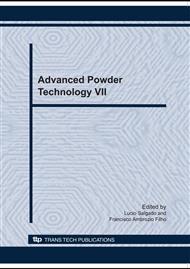p.483
p.489
p.495
p.503
p.515
p.520
p.525
p.531
p.537
Application of CFD in the Study of Performance the Cyclone with Different Shapes
Abstract:
Gas cyclone separators are widely used in industrial processes for separation of dust from gas streams or for product recovery. Their design normally has tangential entrance inlets and the cyclones are defined as funnel-shaped industrial inertial devices. Cyclones are particularly well suited for high temperature and pressure conditions because of their rugged design and flexible components materials. Cyclone collection efficiencies can reach 99% for particles bigger than 5 μm, and can be operated at very high dust loading. One of the aims of this research was simulate, through computational fluid dynamics (CFD), the operation of the cyclones with different geometrics and to analyze the influence its different geometrics in the performance of the cyclones. The numerical solutions were carried out using commercial CFD. A two-dimensional computational fluid dynamics (CFD) Reynolds stress model (RSM) was used to describe the gas–solid flow in cyclones.
Info:
Periodical:
Pages:
515-519
Citation:
Online since:
October 2010
Authors:
Keywords:
Price:
Сopyright:
© 2010 Trans Tech Publications Ltd. All Rights Reserved
Share:
Citation:


